Would you like to learn about 12 different car engines and how they work? Well, we have extensively researched the different types of car engines and would like to share our findings with you.
There are several reasons why this information could be very important to you when deciding what car engine you want. You should know about tradeoffs between engine types.
Some engines have better gas efficiency at the cost of power, while others optimize a low center of mass to improve handling. You might also want to know why some engines have different numbers of cylinders.
It can be important to know your needs and then weigh the advantages and disadvantages of different engines. Continue reading to learn all you need to know about car engines to make an informed decision.
![An illustration of a V8 engine on a grey background, 12 Types Of Car Engines [And How They Work]](https://vehq.com/wp-content/uploads/2021/09/12-Types-Of-Car-Engines-And-How-They-Work-1-683x1024.png)
[toc]
Straight Engines
Straight engines have cylinders aligned in a straight line parallel with the body of the car. These are sometimes confused for inline engines, which have their cylinders in a straight line but perpendicular to the car's body.
This layout allows for more space for more cylinders. While these engines can have a low number of cylinders, a lot of high-end cars use this setup to fit a lot of cylinders.
2 Cylinder Straight Engines
A two-cylinder straight engine, also known as a straight-twin engine, is a small engine where both cylinders are arranged in a straight line with a common crankshaft.
Advantages
This engine is best known for how lightweight it is. It is also very small and doesn't take up too much space. Not only are they small and lightweight, but they are also cheap to produce, bringing down costs.
Disadvantages
One of the disadvantages of the straight-twin engine is that it can be prone to vibration. This has to do with the way the cylinders fire.
If the cylinders move up and down at the same time, shifting weight can cause vibration. If they are offset from one another, the irregular firing rate could cause vibration.
Another disadvantage is power output. While these engines have been used in smaller cars, they are more prominent in motorcycles. This is because the power output of one of these engines is pretty low.
Gas Or Diesel
While straight-twin engines typically run gas, there are some diesel versions. Diesel engines get an efficiency boost when towing large payloads. Since the straight-twin engine can't pull large payloads, it isn't typically produced in diesel versions.
Example
An example of a car that uses a straight-twin engine would be the Honda Z600. Produced from 1970-1974, this Honda was a small car produced in Japan. Exports to the United States mostly ended after 1972.
3 Cylinder Straight Engines
A three-cylinder straight engine, also known as a straight-three engine, is a small engine where three cylinders are lined up with a shared crankshaft.
Advantages
These engines are lightweight and don't take up too much room. They also have more power than 2-cylinder straight engines.
Disadvantages
One of the big drawbacks to a straight-three engine is its total power output. These engines only work well for smaller cars and motorcycles.
Gas Or Diesel
The straight-three engine comes in both gas and diesel versions.
Example

The Saab 96 would be a good example of a car that used a straight-three engine. This car was produced from 1960-1980.
4 Cylinder Straight Engines
A four-cylinder straight engine, also known as a straight-four engine, has four cylinders in a line that connects to a single shared crankshaft.
Advantages
The straight-four engine can offer a decent amount of power while also not being too large or heavy.
Disadvantages
A four-cylinder straight engine, while being a great general purpose engine, may not have the power to tow large trailers.
Gas Or Diesel
The straight-four engine has both gas and diesel variants.
Example
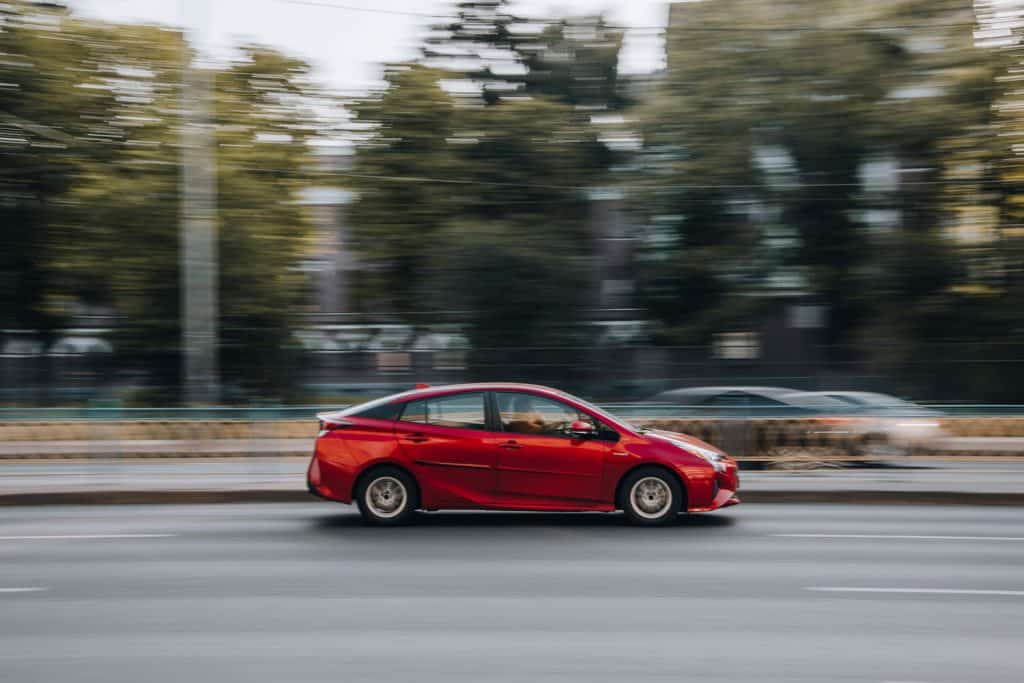
While many cars use the straight-four engine, here we have a Toyota Prius, for example. There are hundreds of other types of cars that use this engine because it is decently powerful but still not too big.
5 Cylinder Straight Engines
A five-cylinder straight engine, also known as the straight-five engine, is an engine where all five of its cylinders are in a line and connected to a single common crankshaft.
Advantages
The best advantage of the straight-five engine is its increased power from the straight-four. It also is smaller than a six-cylinder straight engine which can make it useful for situations where a six-cylinder straight engine won't fit.
The straight-five engine is also famous for the sound it makes. Many collectors like cars with these engines for the unique sound.
Disadvantages
One of the disadvantages of the straight-five engine has to do with vibrations. The way the cylinders fire, there are moments where there is no torque on the crankshaft. This can cause vibrations that aren't there for engines with an even number of cylinders.
Gas Or Diesel
The straight-five engine has both gas and diesel variants.
Example
The Audi A6 is an example of a car that uses a straight-five engine. It used the engine from 1994 to 1997.
6 Cylinder Straight Engines
A six-cylinder straight engine, also known as a straight-six engine, is an engine where six cylinders are aligned in a row parallel with a single shared crankshaft.
Advantages
A straight-six engine can deliver a lot of power to the driveshaft. Also, the way the cylinders fire causes the straight-six engine to be extremely balanced. This reduces vibrations and allows the engine to run smoothly.
Disadvantages
Since the straight-six engine has so many moving pieces, it can lose a lot more energy to friction. This can make them less gas efficient than their fewer cylinder counterparts.
Gas Or Diesel
The straight-six engine comes in both gas and diesel variations.
Example
The Hudson Hornet is an example of a car that famously utilized the straight-six engine. They were produced from 1951-1954.
8 Cylinder Straight Engines
An eight-cylinder straight engine, also known as a straight-eight engine, has eight cylinders in a row, all connected to a common crankshaft.
Advantages
These engines can produce a lot of torque, making them great for sports and racing cars.
Disadvantages
One drawback to these engines is that they can be a bit long. This can make fitting them into most cars a challenge. Cars are typically specifically designed to fit a straight-eight engine.
Gas Or Diesel
The straight-eight engine comes in both gas and diesel. Most straight-eight engines are gas.
Example
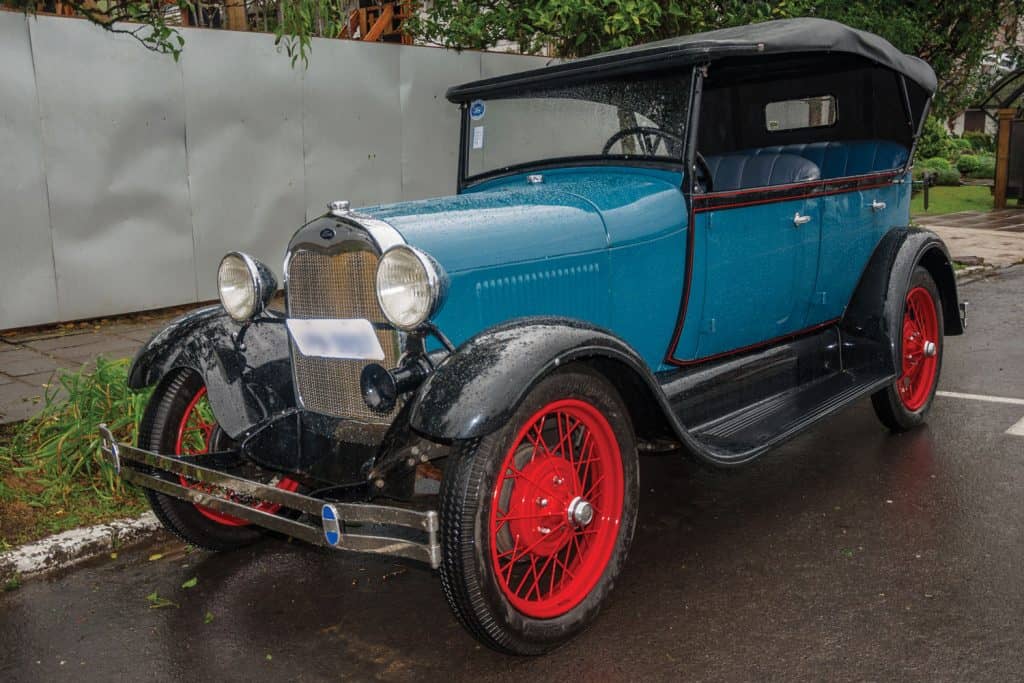
Most cars that used the straight-eight engine were luxury cars made from 1920 until the start of world war II. Oldsmobile used the straight-eight in some of its luxury cars in the late 1920s.
Flat Engines
Flat engines have their cylinders on opposite sides of the crankshaft. This can give the engine a lower center of mass, which can help to improve stability.
Since the cylinders are on opposite sides of the crankshaft, flat engines only come with even cylinder numbers to balance the engine.
2 Cylinder Flat Engines
A two-cylinder flat engine, also sometimes called a flat-twin engine, has two cylinders that are on opposite sides of the crankshaft.
Advantages
The flat-twin engine is cheap to produce. It is also lightweight and takes up little space. The pistons being horizontal also lowers the center of mass, increasing stability.
Disadvantages
The flat-twin engine is a small engine that will only work in small cars. Even a medium-size car would be too large for an engine like this.
Gas Or Diesel
Most flat-twin engines are gas, not diesel. There were some diesel flat-twin engines made for agriculture vehicles from 1932 to the 1950s.
Example
A very famous example of a flat-twin engine used in a car is the original Ford Model A. Produced in 1903, only 1,750 cars were made that year.
4 Cylinder Flat Engines
A four-cylinder flat engine, also called the flat-four engine, has four cylinders. Two of the cylinders are on one side of the crankshaft, and two are on the opposite side.
Advantages
With the cylinders laid flat, the engine has a lower center of gravity. This will increase stability in the vehicle.
Disadvantages
The flat-four engine can be a bit more expensive than its straight-four counterpart. It can also be a bit harder to perform maintenance.
Gas Or Diesel
The flat-four engine comes in both gas and diesel variants.
Example
The Toyota 86 is a car that utilizes a flat-four engine. The Toyota 86 entered production in 2012 and is still being produced to this day.
6 Cylinder Flat Engines
A six-cylinder flat engine, also called the flat-six engine, had three cylinders on one side of the crankshaft and three cylinders on the opposite side.
Advantages
With the distribution of cylinders, the flat-six engine is perfectly balanced. This reduces vibrations and helps to keep the engine running well for a long time. This engine is also capable of producing a large amount of power.
Disadvantages
The flat-six engine can use a lot of gas to get its increased power output. You can expect to be going to the gas pump more with one of these engines.
Gas Or Diesel
The flat-six engine has both gas and diesel options available.
Example
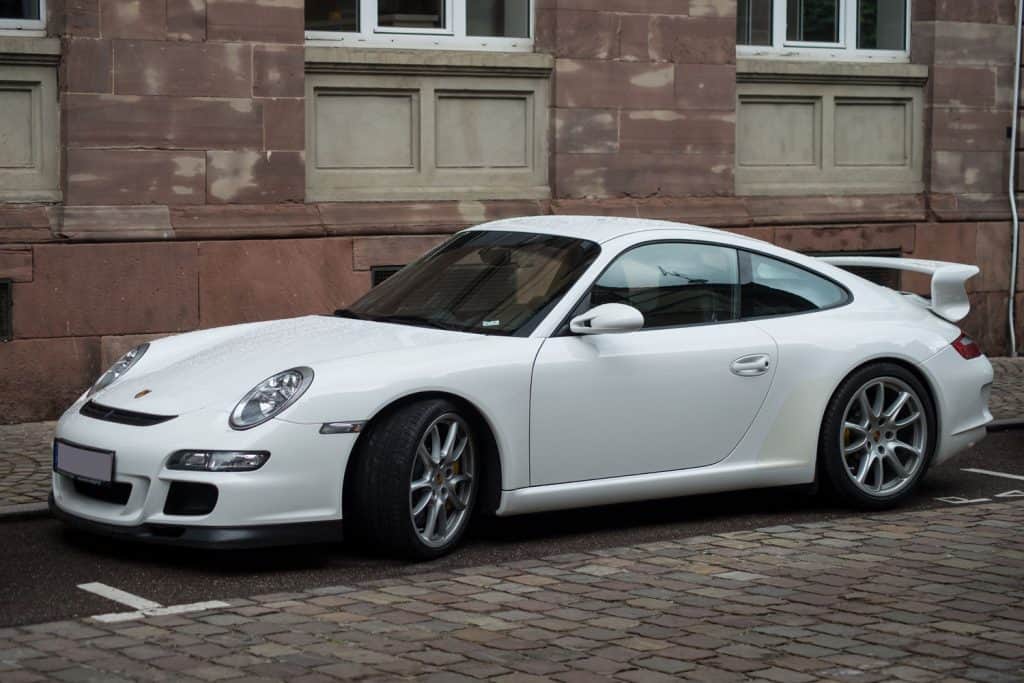
The Porsche 911 is famous for exclusively using the flat-six engine since 1963.
8 Cylinder Flat Engines
The eight-cylinder flat engine, also called the flat-eight engine, has four cylinders on one side of the crankshaft and four on the opposite side.
Advantages
These engines are powerhouses. They can produce enough torque to tow a large trailer.
Disadvantages
These engines do use a lot of gas because of their size. Also, the flat-eight engine vibrates a lot more than its straight-eight counterpart.
Gas Or Diesel
The flat-eight engine comes in both gas and diesel options.
Example
The Porche 908 is an example of a racing car utilizing the power of the flat-eight engine.
V Engines
V-engines utilize two rows of cylinders offset by an angle. This angle varies depending on the specific engine and the number of cylinders. They are shorter than their straight-line counterparts at a cost of additional vibration.
6 Cylinder V Engines
A six-cylinder V-engine, commonly known as a V6, is an engine where there are two rows of three pistons, each offset by 60 degrees. Some engines use a 90-degree offset, but this is more prone to vibration issues.
Advantages
These engines can deliver a large amount of power and torque. They are great engines to tow trailers and handle off-roading.
Disadvantages
These engines, however, are not gas efficient. To get their strength, they burn through quite a bit of gas. They also vibrate a lot more than their straight-six counterparts.
Gas Or Diesel
The V6 engine comes in both gas and diesel. Diesel V6 are popular engines for trucks, providing enough power to meet the truck's performance needs.
Example
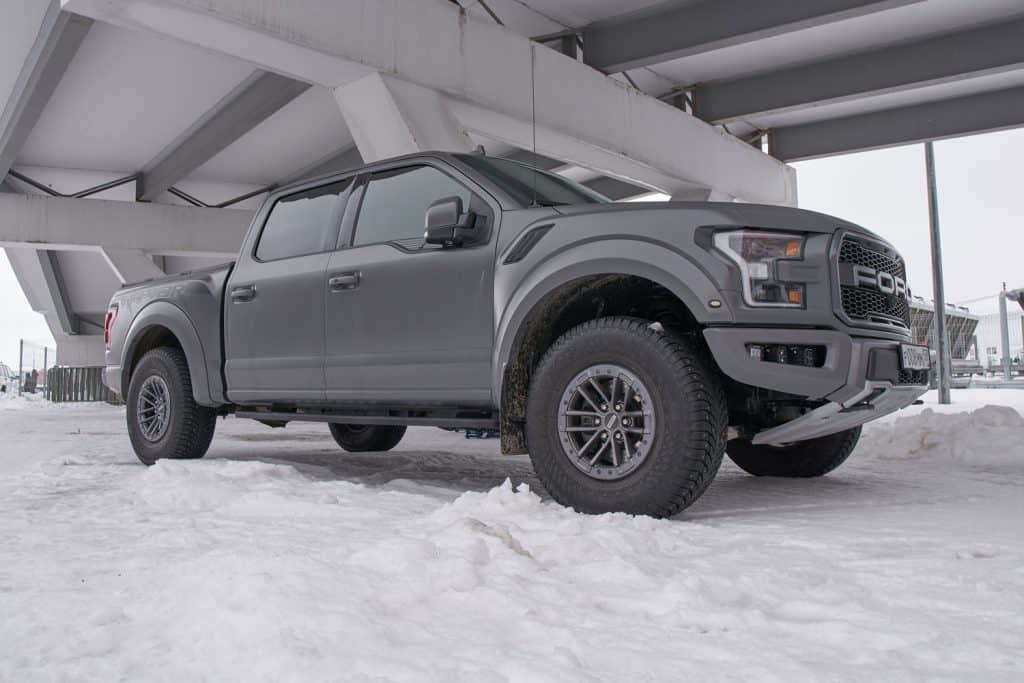
A great example of a truck using the V6 engine well is the F-150. This truck is a workhorse and makes great use of its engine. On Ford's website, they have more specific vehicle specifications.
8 Cylinder V Engines
An eight-cylinder V engine, better know as the V8, is an engine with two rows of four cylinders offset by a 90-degree angle.
Advantages
This engine can produce a lot of power, making it very popular in trucks. The V8 also is smaller than a straight-eight engine would be.
Disadvantages
The way the pistons are arranged on a V8 makes them prone to vibration. Also, the V8 uses quite a bit of gas. You can expect a truck with a V8 to need to fill up a lot more often than a truck with V6.
Gas Or Diesel
The V8 comes with both gas and diesel options. Since the V8 has all the power to tow a large trailer, and diesel is more gas efficient at towing, a lot of people opt for a diesel V8 when choosing a truck.
Example
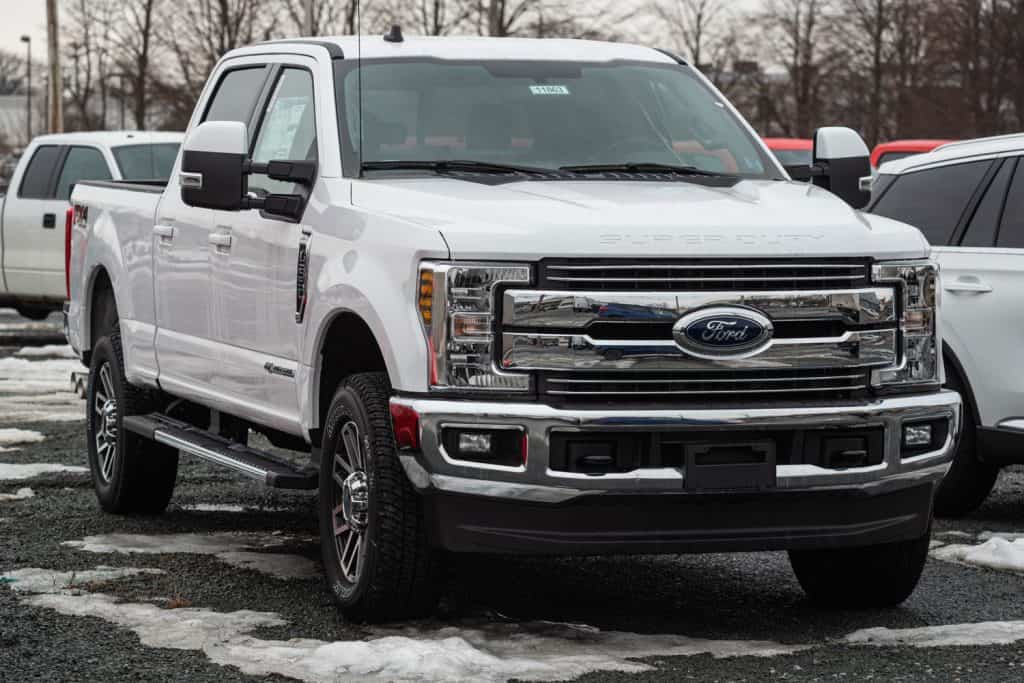
The F-250 is a very popular truck that uses a V8 engine. This truck was built to take full advantage of its engine for towing and hauling large payloads. Ford's website has more specification information if you would like to explore more.
Closing Thoughts
There are many types of engines with various advantages and disadvantages. Whether you need a small balanced engine, like a flat-twin engine, or a powerhouse like the V8, there is an engine for your needs.
We hope you enjoyed this article. If you would like to learn more, check out some of these other posts on this blog.
What SUVs Have V6 Engines In 2021? [A Look At Midsize And Full-Size SUVs]
